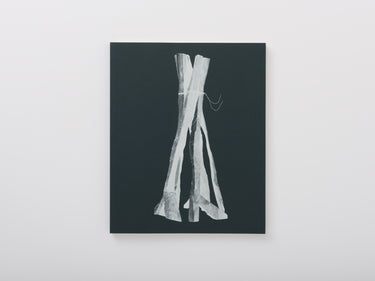This poster is produced on the occasion of Georg Baselitz: Sculptures 2011-2015 at Serpentine. It celebrates Baselitz’s Yellow Song, 2012-2013, one of the ten sculptures featured in the exhibition. Measuring over 3 metres tall, Yellow Song is carved from a single piece of timber. This demonstrates the considerable challenge of carving six hoops encircling two vertical pieces of wood. Made as a maquette for bronze works, Yellow Song was not originally intended for public exhibition – instead, it was the first realisation of an idea that would later be transformed through a casting process. Using power saws, axes and chisels Baselitz creates a solid, impactful figure that maintains the materiality of timber with distinctive incisions and notches on their surfaces.
Yellow Song is one of two sculptures in the exhibition which is painted in a distinctive yellow. Reflecting on his colour choice, Baselitz explains ‘the decision to use yellow is very clear and not arbitrary. Yellow has a different symbolic value in different regions. For us, yellow stands for envy, while it might signify happiness or good fortune somewhere else. I find that yellow is a colour that takes away plasticity by balancing out the recesses and the incisions. It outshines a lot of things. So, yellow is a state prior to gold. I would prefer to make these sculptures gold, but I’ve never dared to do so.’
With a career spanning over six decades, Georg Baselitz (b. 1938, Saxony, Germany) first came to prominence in 1960s Germany as a painter. From 1969 onwards, he has been known for inverting – or turning upside down – human forms and other motifs within expressionistic paintings which attempt to move away from content and narrative. Baselitz instead focussed on form, colour and texture, bringing new perspectives to the tradition of figurative painting. He turned to sculpture from 1979, continuing to explore tensions between the figurative and the abstract through crude approximations of figures and body parts carved from wood.




